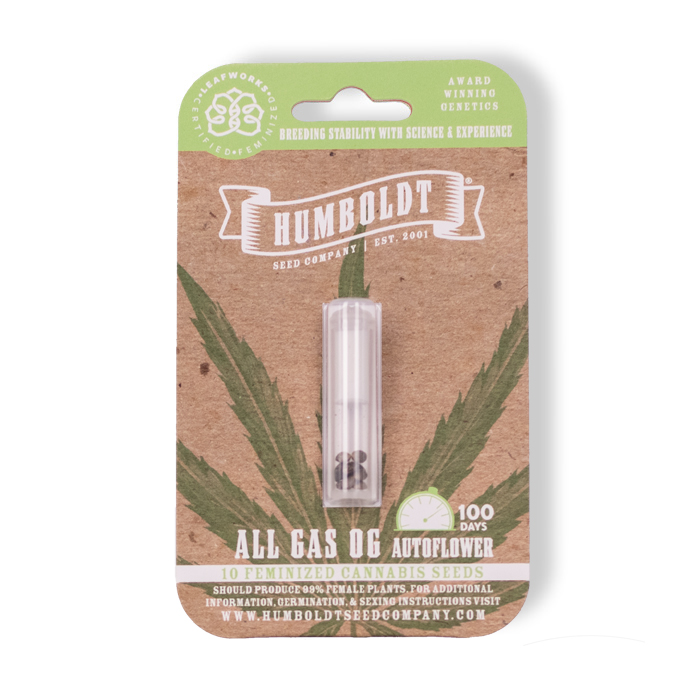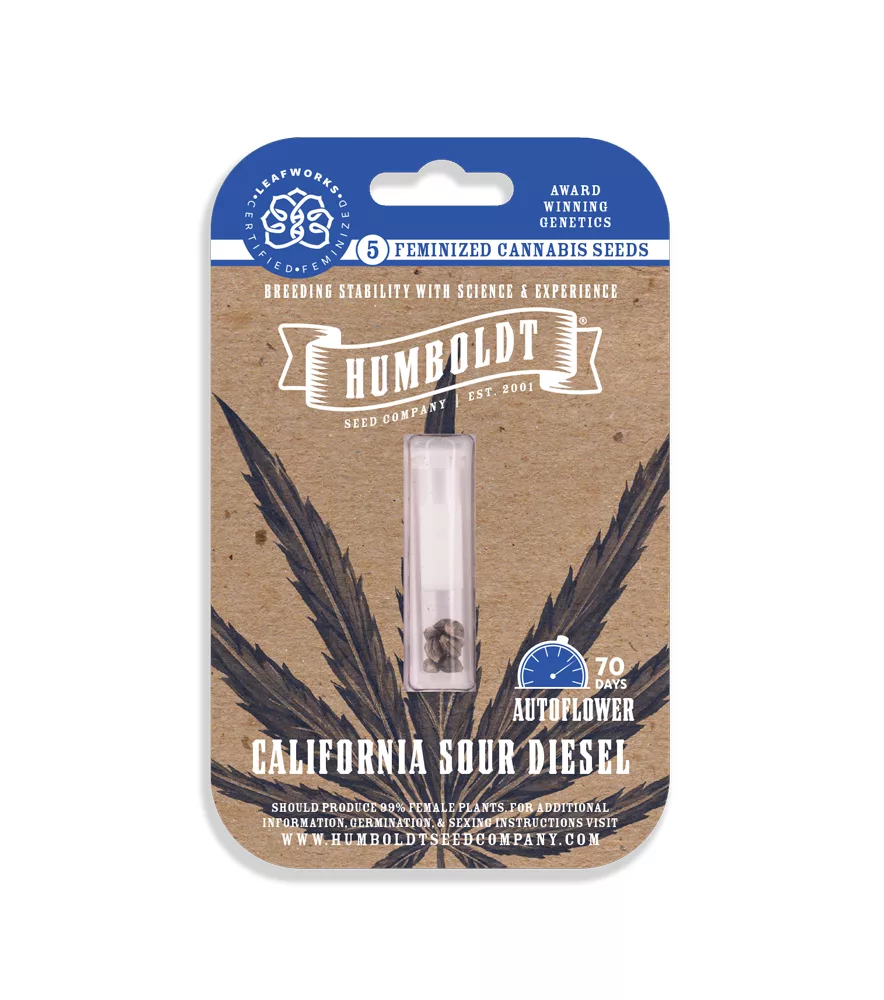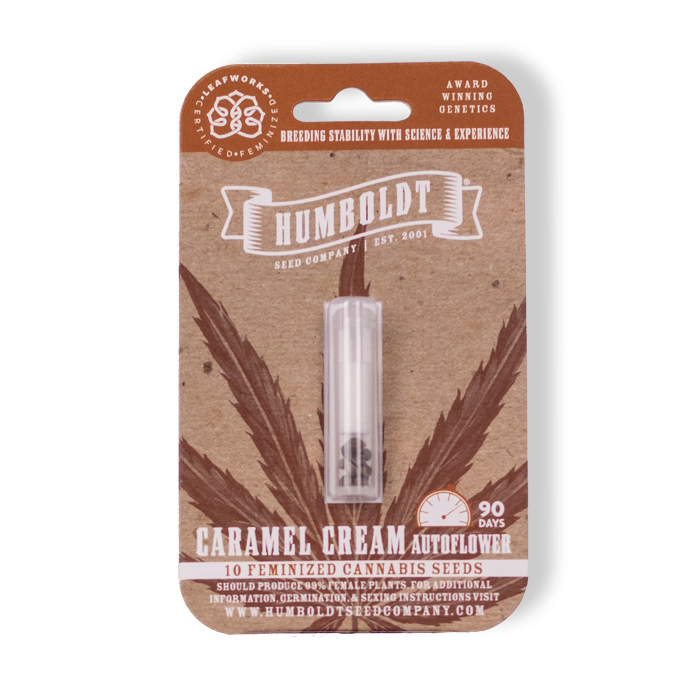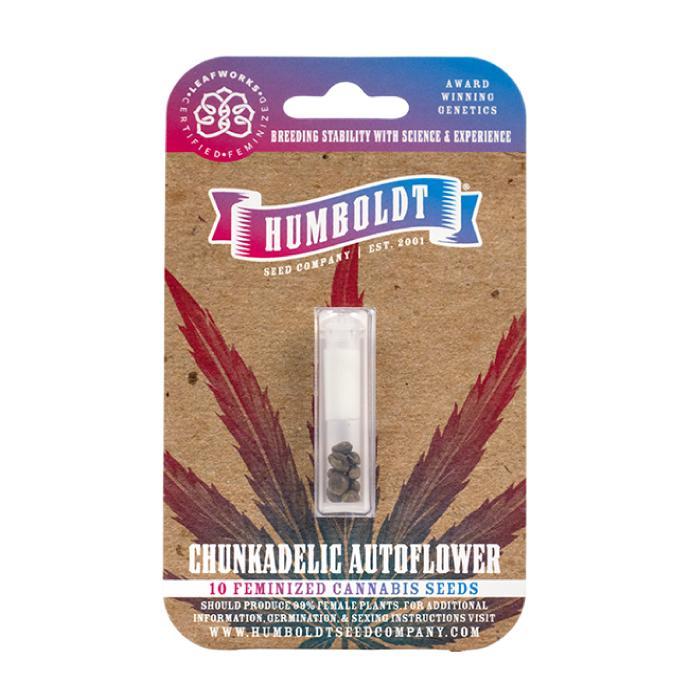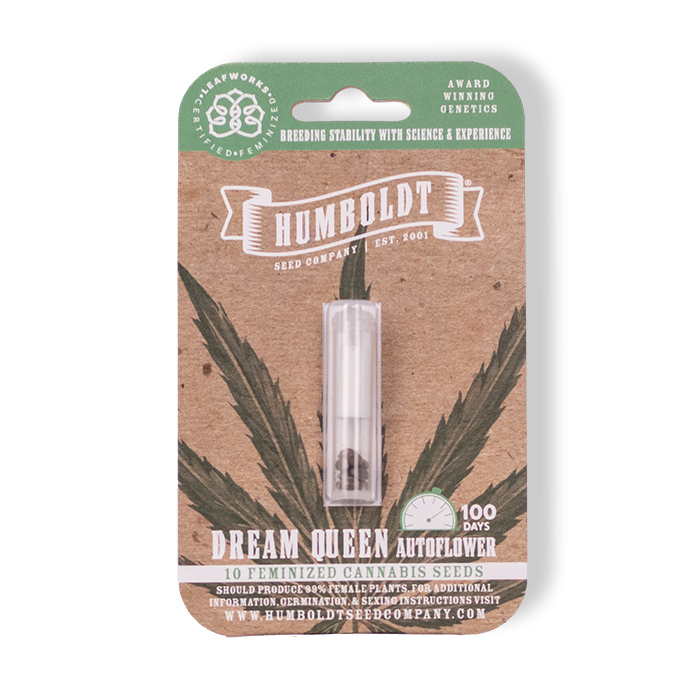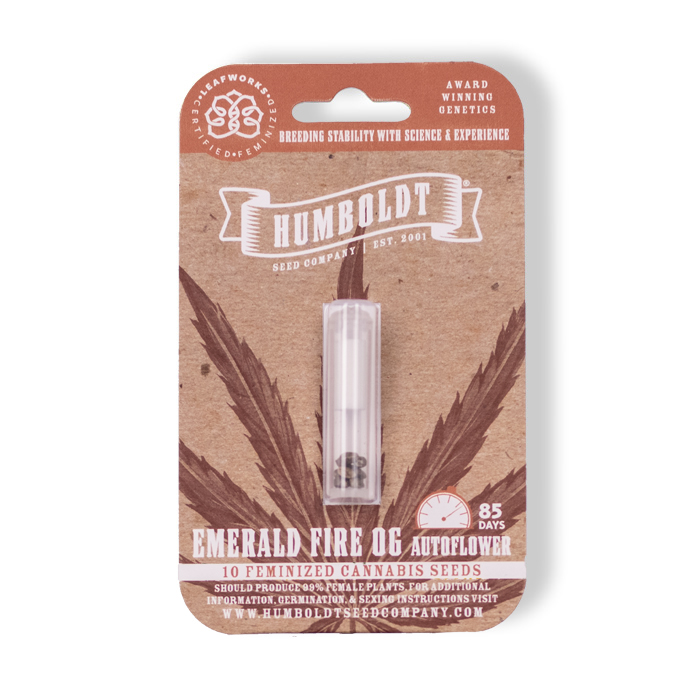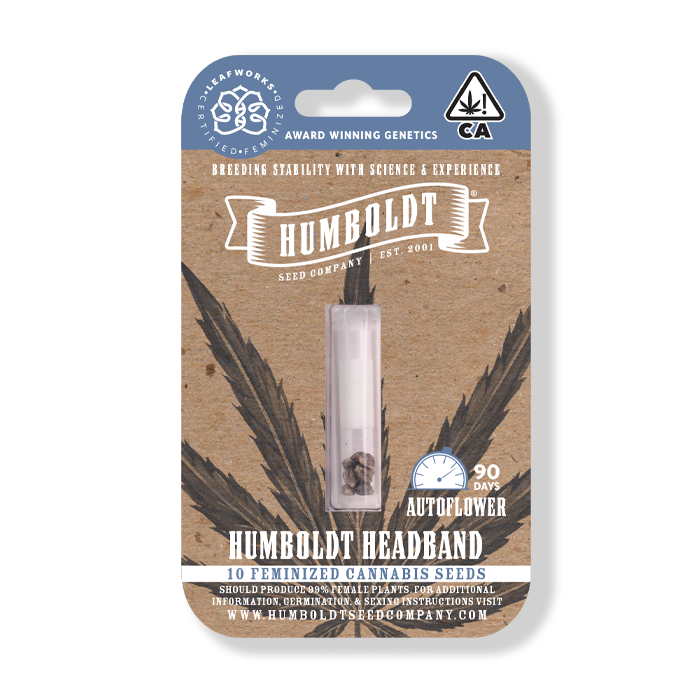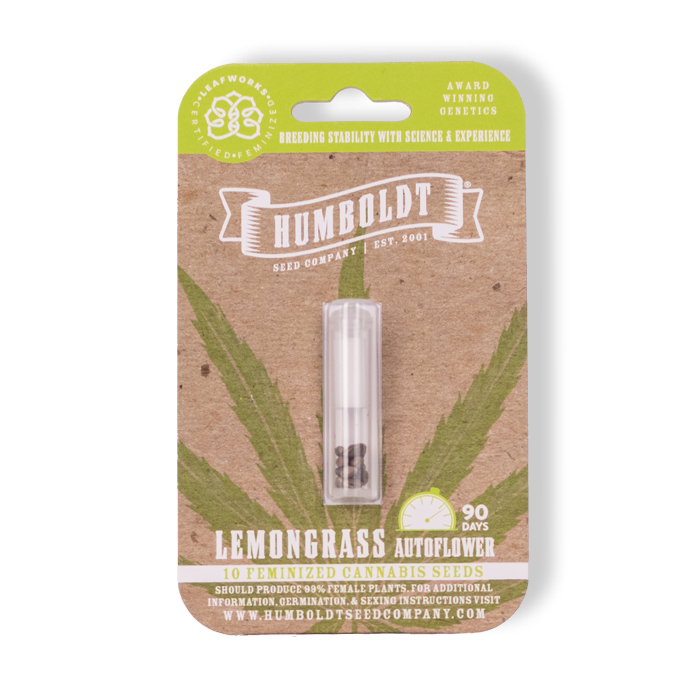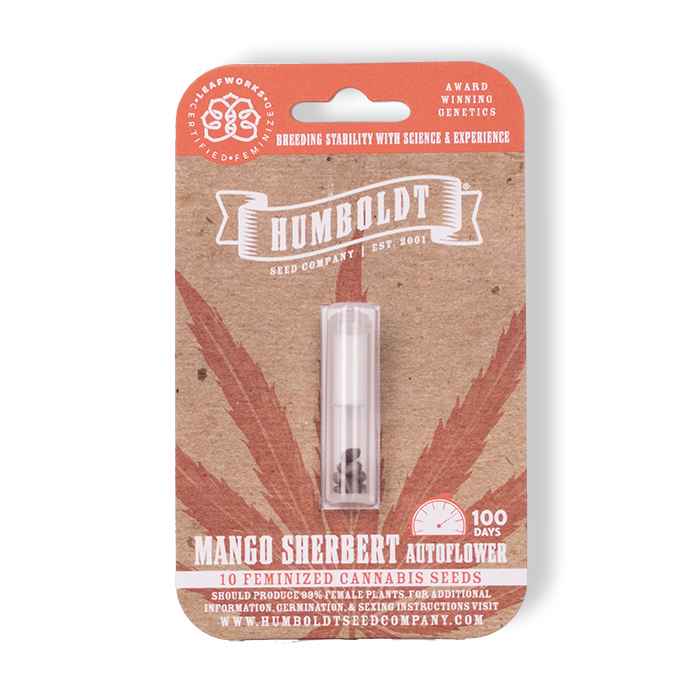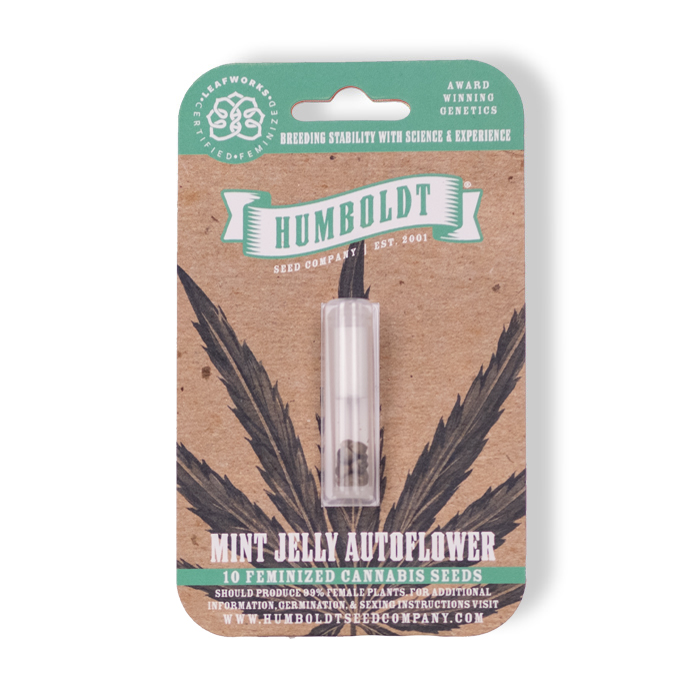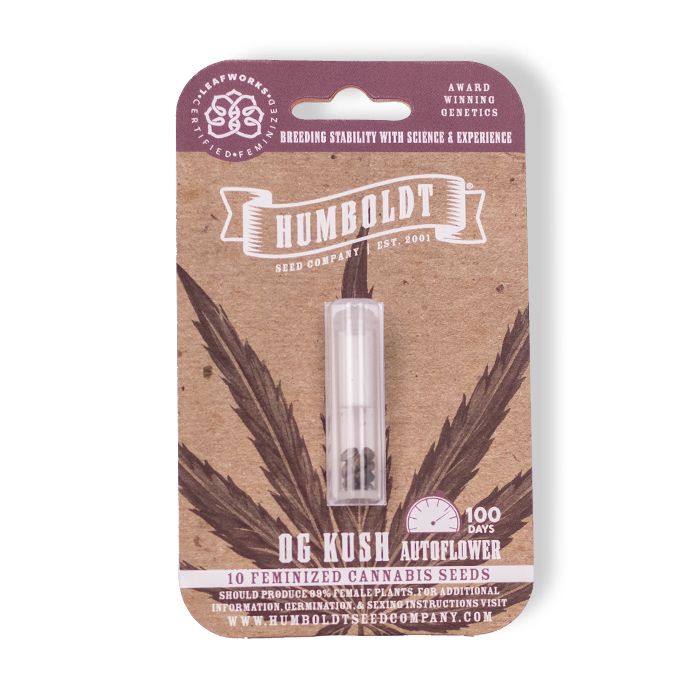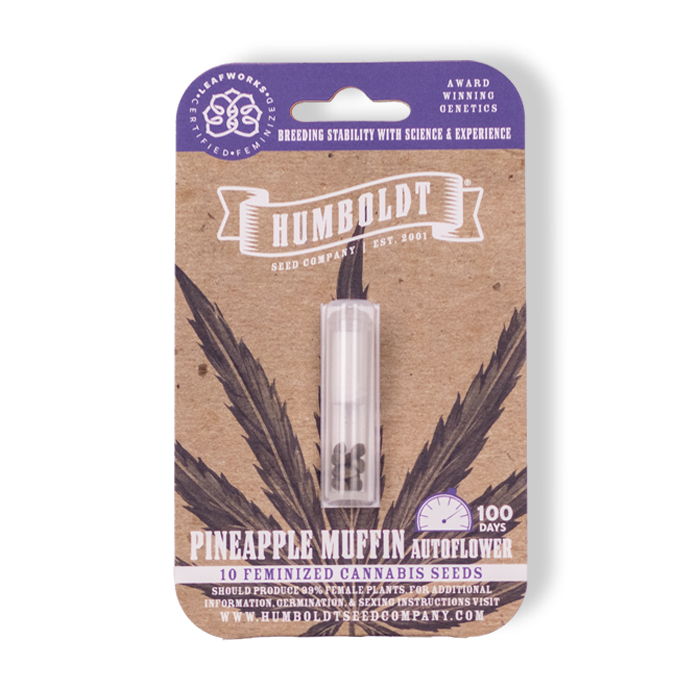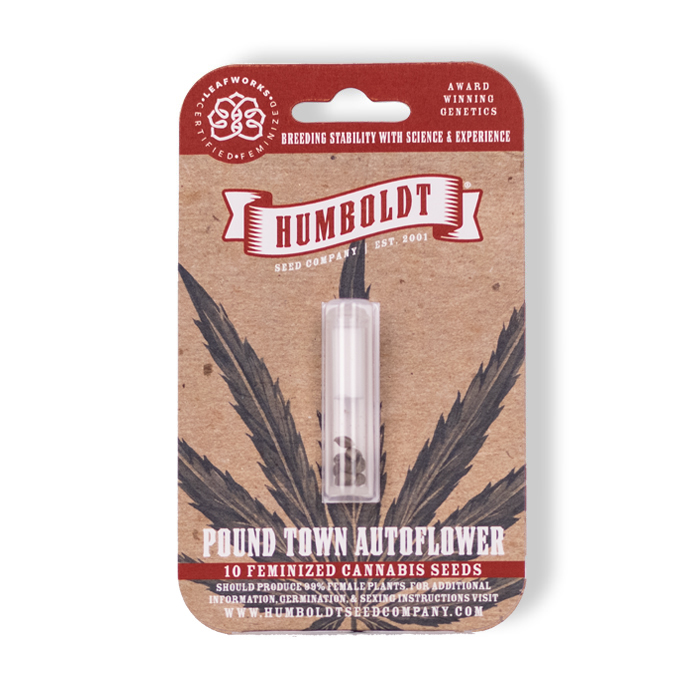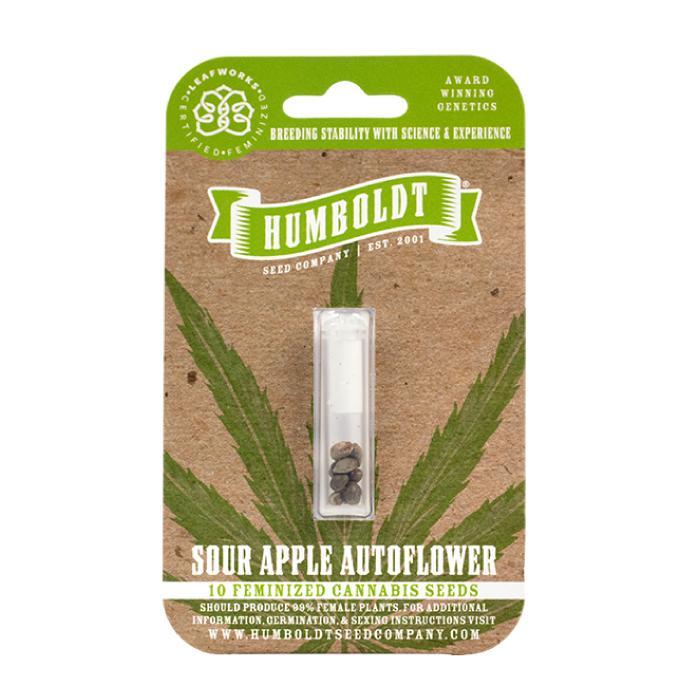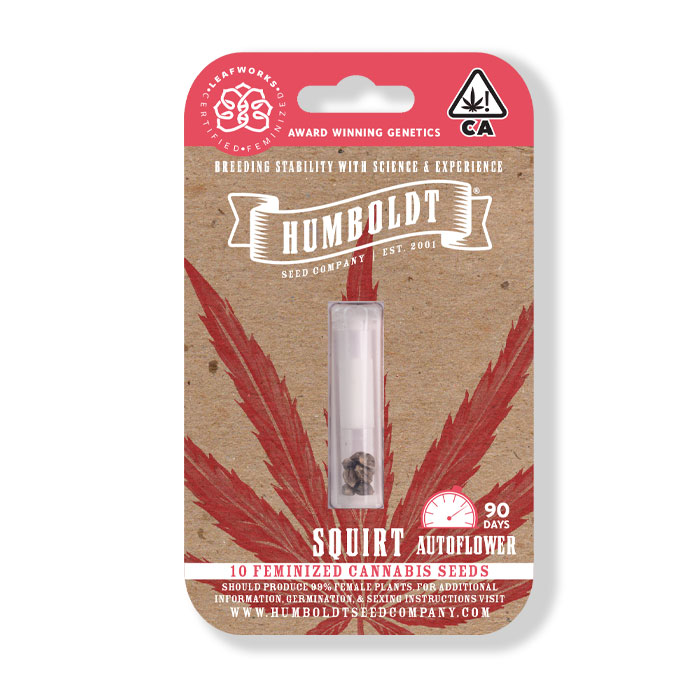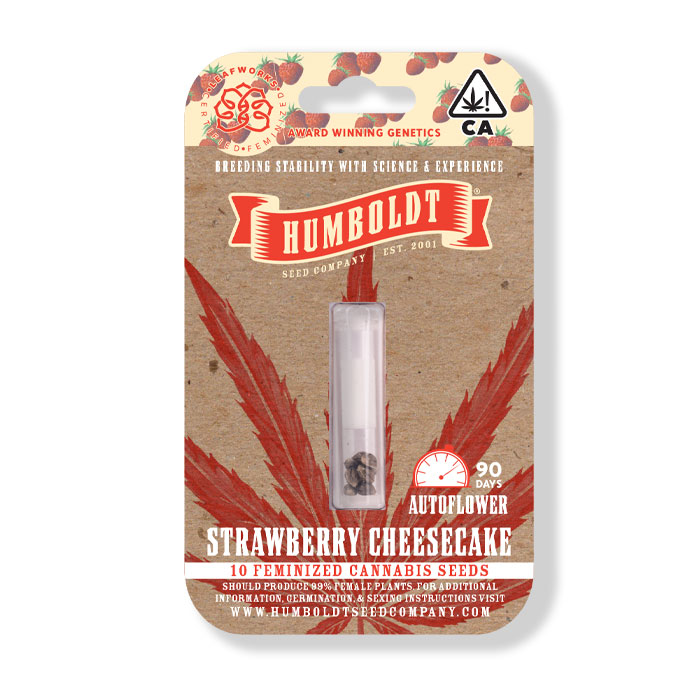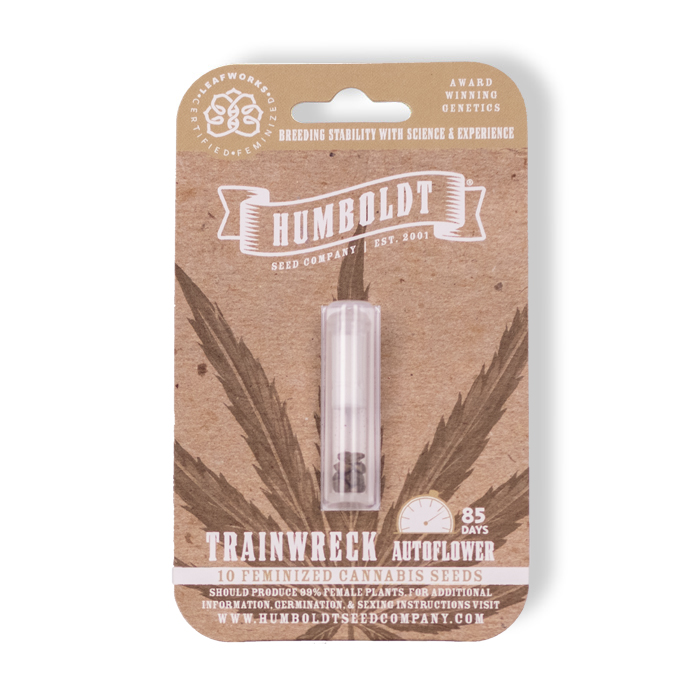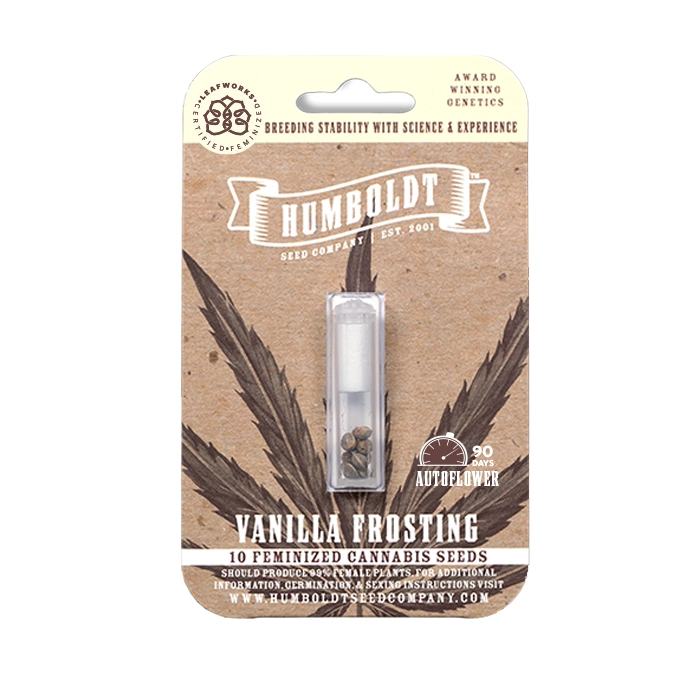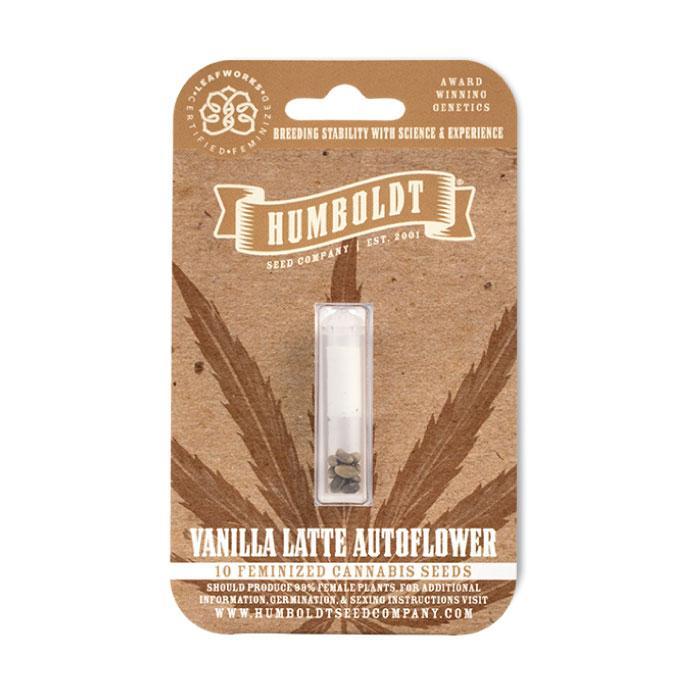California’s Best Autoflower Cannabis Seeds
Discover the Unique Advantages of Autoflowering Cannabis Seeds
Autoflower cannabis sets itself apart from traditional “photoperiod” strains by flowering independently of night lengths. While photoperiod strains rely on changing light conditions, autoflowering varieties transition into flowering around 59 to 95 days after seed germination, regardless of light cycles. This characteristic makes them a game-changer for growers. Unlike photoperiod strains that initiate flowering in response to an increase in nighttime hours, autoflowers remain unfazed by light variations. This can be highly advantageous to growers for many reasons including faster turnaround, no need to alter the light cycle artificially through light deprivation, and harvest planning to avoid inclement fall weather. While autoflowers demand essential elements such as light, water, warmth, and nutrients for optimal growth, their flowering schedule is not contingent on dark hours like their photoperiod counterparts. Through careful breeding across multiple generations, our autoflower strains embody all the desirable traits of our popular photoperiod varieties. Experience the convenience, efficiency, and quality that autoflowering cannabis brings to modern cultivation practices.
What is an autoflowering cannabis seed?
Autoflowering cannabis seeds are designed to start flowering automatically without the need for a change in light cycles. This unique characteristic can be attributed to their cannabis ruderalis lineage, a subspecies that has evolved to withstand the extreme conditions of the Northern Hemisphere.
While traditional cannabis seeds start flowering as nighttime hours increase, autoflowering seeds are time-dependent and begin flowering once they reach a specific age. The best light cycle for autoflower varieties is debatable, but many growers use 18 hours of light. Others may opt for 20 hours on and four hours off or 18/6 to save power. 24 hours of light should be avoided.
Why grow autoflowers: exploring the advantages
Most autoflower seeds on the market are feminized, meaning they exclusively produce female plants when germinated. These female plants produce buds with high levels of cannabinoids, which are responsible for the psychoactive effects that give you a “high.” Autoflower strains were once known for their low THC levels. However, with advancements in breeding techniques, these strains can now match and even exceed the THC levels found in photoperiod strains.
Highly resilient to pests and diseases, autoflowers are an excellent choice for beginner growers looking for an easy-to-grow plant. They can also thrive in colder climates and are often smaller than traditional cannabis plants, making them ideal for growers with limited space. With a life cycle averaging 8 to 12 weeks from seed to harvest, growers can produce more than one harvest per year, which is perfect for those in higher latitudes with shorter growing seasons.
What yield can I expect from autoflowers?
Yields can vary with autoflowering strains depending on several factors, including the grower’s experience, environmental conditions, equipment, and the strain’s lineage. Keep in mind that some strains have a higher yield potential than others. If you’re looking for a strain that’s both easy to grow and produces impressive yields, check out Jelly Donutz. This automatic variety is known for its XL yields and is ideal for those looking to maximize their harvest.
Average autoflower yields range from 28 to 112 grams per plant, depending on the setup. Outdoor grows will be on the higher side and indoor grows on the lower side due to the height constraints.
How to germinate autoflower seeds
For germinating autoflowering seeds, placing two moist paper towels between two plates can create the ideal environmental conditions for germination. Follow this easy five-step walkthrough to get started:
- Place a moist paper towel between two plates.
- Place the seeds an inch apart on one of the moist paper towels.
- Close the plates, sealing the seeds between the moist towels.
- Open the plates daily and moisten the paper towels with water.
- Be patient and wait up to 72 hours for the taproot to emerge.
Growers should maintain a temperature range between 21 °C and 26°C, with high humidity levels around 60% to 70%. This will ensure healthy and robust plant growth. Once your seeds have germinated, you can plant your seedlings into the ground.
How to plant autoflowers
To plant your autoflower seed, create a 1-inch hole in your chosen medium. Place the seed in the hole, taproot down, and gently backfill the soil around it. While autoflowers can thrive with a 12/12-hour light schedule, we recommend using an 18/6 light cycle to promote healthy growth.
The additional hours of darkness allow plants time to recover. To avoid light stress, position grow lights 18-24 inches above the seedlings and adjust them throughout the growth cycle.
To determine when to water your autoflowers, knead the medium with your finger. If it feels dry, it’s time to water. You can also weigh your plant once it’s been watered and check daily to see if the pot feels lighter, indicating your plant could need watering. Start with small volumes of water around the apical mainstem.
As the plant develops, you can gradually increase the volume and distribution of water and nutrients to promote robust growth.
What soil do autoflowers need?
Autoflowering cannabis strains thrive in nutrient-rich super soil with a neutral pH level and a light, airy texture that supports root development. Be cautious when selecting a potting mix for cannabis growing, as many mixes sold in garden centers are high in nutrients that can potentially harm seedlings. Opt for a medium-light mix or a soil mix containing perlite, coco coir, or peat moss designed explicitly for cannabis cultivation.
- Perlite is a well-draining and aerated growing medium crucial for optimal root development and nutrient uptake in autoflowers.
- Coco Coir promotes healthy root development, helps retain moisture effectively, maintains stable pH levels, and encourages vigorous growth and XL yields.
- Peat Moss is a highly beneficial amendment for growing autoflowers in dry climates thanks to its exceptional water retention and nutrient absorption rate.
What size pot do autoflowers need?
To grow auto seeds, it’s important to select the correct pot size before the cultivation cycle begins. Unlike photoperiodic plants, transplanting autoflower plants into a larger container can stunt their growth. To ensure optimal growth, beginners growing autoflowers indoors should use 3-5 gallon (11-19 liter) pots. Outdoors, beginners should choose 5-10 gallon (20-40 liter) pots to provide sufficient root space and stability against outdoor elements.
What nutrients do autoflowers need?
Autoflowers, like photoperiod strains, depend on vital macronutrients, including nitrogen, potassium, and phosphorus. However, it’s best to use lower EC and fertilizer levels for their shorter stature. To achieve the best results, it’s recommended to use trusted nutrient brands like Fox Farm, Advanced Nutrients, or Biobizz.
When feeding autoflowers nutrients, it’s best to start with half the suggested nutrient dosage. Keep an eye on the plants and adjust the dosage as needed.
- Providing nutrient supplements for autoflowers during the seedling stage is not recommended, as the excess nutrients can easily overwhelm the root system.
- During the vegetative stage, it’s advised to use a fertilizer with an NPK ratio of around 10-7-5 to support the plant’s growth and development. The feeding schedule depends on whether you’re using hydroponic or soil mediums.
- As the autoflower plant transitions into the flowering stage, its demand for phosphorus and potassium increases. For best results, maintain an NPK ratio of around 5-10-10.
Expert tips for autoflowers during vegetative phase
Autoflowering cannabis strains have a shorter vegetative period of just 4 to 6 weeks. To maximize growth during this short time, here are some practical tips that you can follow:
- For optimal growth, it’s essential to maintain a consistent temperature range of 75-85°F (21-29°C) and keep the humidity levels between 50-60%.
- To ensure proper air circulation and minimize the risk of pests and diseases, it’s recommended to utilize oscillating fans to help prevent humidity buildup.
- Autoflowers progress rapidly through vegetation, so keeping a close eye on plant development is crucial. To avoid stressing the plants, minimize pruning during this stage.
- Using training techniques on autoflowers is not recommended because of their short lifespan. Recovery time can be lengthy, and it can stunt growth and development.
What is the duration of the flowering period for autoflowers?
Autoflowering plants are known for their quick flowering times, with most plants ready to harvest within 55-95 days of the flowering stage. Indoor cultivation has the added advantage of removing the need to worry about lighting changes, allowing for year-round cultivation.
However, even with their independent flowering, outdoor autoflower cultivation requires careful planting timing to maximize yields. Planting too early in the season could cause stunted growth from the colder weather, while planting too late may yield the same outcome.
Expert tips for autoflowers during flowering
Typically, autoflowering cannabis strains have a flowering period that ranges from 55 to 95 days. If you’re looking to maximize your yields during the flowering stage, here are some expert tips:
- For optimal growth, it’s essential to maintain a consistent temperature range of 70-80°F (21-26°C) and keep the humidity levels between 40-50%.
- During the flowering stage, growers will notice pre-flowers emerging at the nodes, signaling the start of the flowering phase. These pre-flowers will continue to develop and swell into the sticky buds that cannabis enthusiasts adore.
- Using oscillating fans during flowering is recommended to avoid botrytis and mildew in the buds. Because their dense structure, indica-dominant strains are more susceptible to bud rot.
- Light defoliation can occur within the first few weeks of the flowering stage, but it’s critical not to remove more than 20% of the foliage.
How to harvest your autoflowers
Now that you’re approaching the end of the growing cycle, you may be wondering what to do next. So, let’s discuss some expert tips and techniques for a successful harvest!
- Observing the colors of the trichomes can help determine the right time to harvest autoflower plants. Trichomes are the plant’s resin glands, and growers should aim to harvest when around 80% of the trichome heads are milky white. A jeweler’s loupe or magnifying glass is a great tool to help assess the trichome ratio and determine the optimal harvest time.
- Once your autoflowers have reached the optimal trichome level, use gloves when cutting your autoflowers down. Cut each plant at the base of the stem and hang them upside down in a dark, ventilated room with a temperature of 60 to 65 degrees and humidity below 50% for 14 days. Minimize contact with the buds, which can degrade the resin glands and decrease the cannabinoid content.
- Once the buds are dried, put them into glass jars for curing. Curing for several months can help remove chlorophyll and refine the terpene profile. Remember, just like a fine wine, the longer the cure, the stronger the aroma and flavor become.
- During the initial stage, burp the jars every few days to remove stagnant gasses and refresh oxygen levels. As the curing process progresses, burp the jars once every week.
Tips for growing autoflowers indoors
Here are some expert tips that you should keep in mind when growing autos indoors:
- Some strains are better suited for indoor growing than others, so do your research and choose a strain that thrives in grow rooms.
- Consider the size of your indoor grow space and determine the photosynthetic photon flux density needed to provide your plants with a full spectrum of light.
- Position your lights at the proper distance from your plants. If it’s too close, your plants could get burned; too far, and they won’t get enough light.
- Overwatering is one of the most common mistakes made by new growers. Only water plants when the soil is dry, and avoid water logging the soil.
Tips for growing autoflowers in a grow tent
If you’re growing autoflowers in a grow tent, check out these expert tips for a successful harvest.
- Proper airflow in your grow tent helps to prevent heat buildup and moisture accumulation. High humidity can cause mold and fungal growth, while low humidity can cause plants to wilt.
- During the flowering stage, autoflowering plants produce a powerful odor, making it necessary to install a carbon filter in your grow tent to manage any unwanted aromas.
- As a curious grower, you might feel the urge to check on the progress of your autoflowers frequently. However, you can rest assured that autoflowers aren’t impacted by light cycles, so opening the tent and checking on them won’t negatively affect the flowering stage.
- Training techniques on autoflowering plants are only recommended for experts as they take longer to recover, and can easily be triggered into premature flowering.

